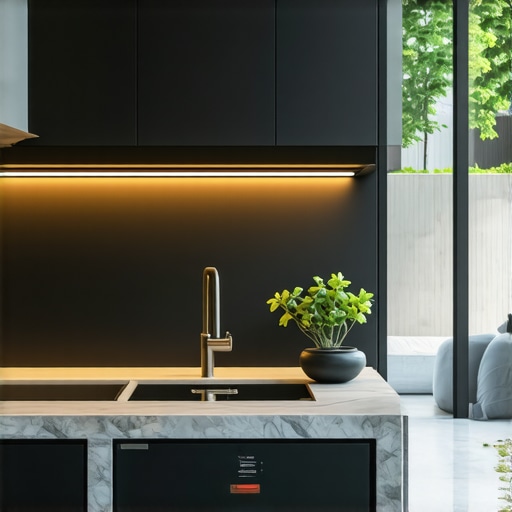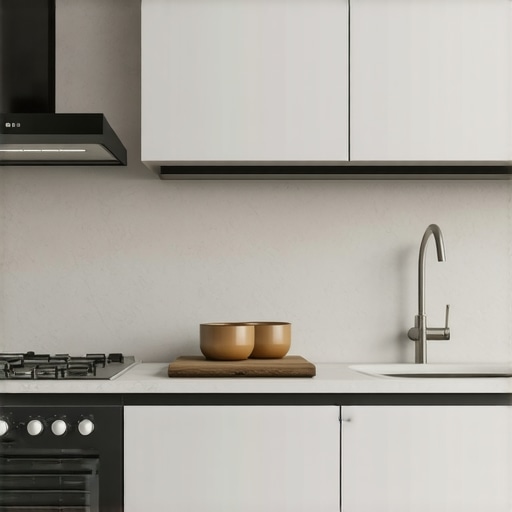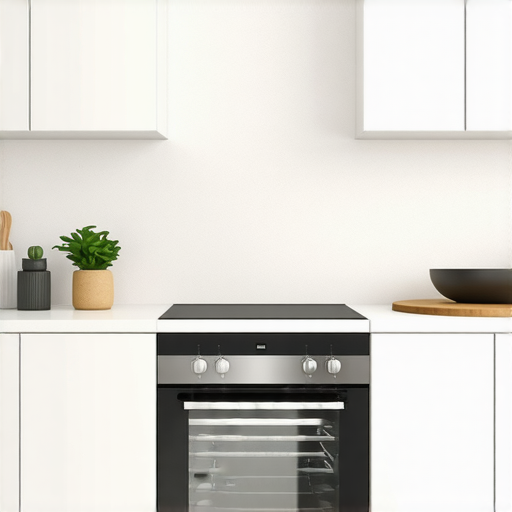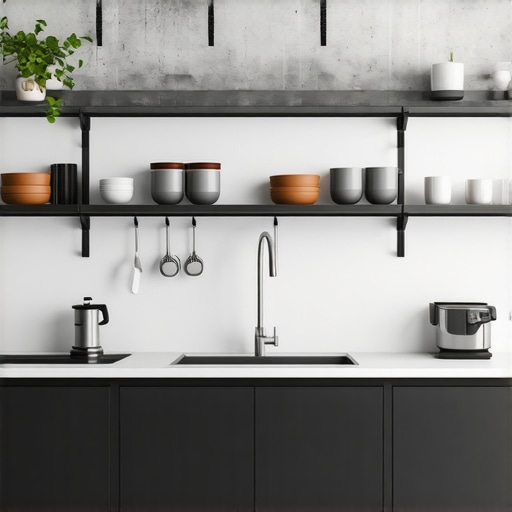My Personal Journey to a Clutter-Free Kitchen with Built-In Cabinets
When I first decided to remodel my kitchen, I knew I wanted a space that was both stylish and highly functional. After living with traditional cabinets that often felt cramped and inefficient, I embarked on a journey to discover the best built-in cabinets and smart storage solutions. The transformation was remarkable, and I can honestly say that incorporating built-ins changed my entire cooking and living experience.
Why Built-In Cabinets Became My Favorite Upgrade
During my research, I learned that built-in cabinets are not only aesthetically pleasing but also maximize space in ways standard cabinetry can’t match. I found that custom-built options allow for tailored storage, fitting perfectly into odd nooks and crannies. This was especially important in my small kitchen, where every inch counts. I opted for a combination of open shelving and hidden compartments, which made my kitchen feel open yet organized.
Creative Storage Hacks That Made a Difference
One of the most effective hacks I discovered was installing pull-out shelves and lazy Susans inside my built-ins, which you can explore further in this ultimate guide to storage solutions. These small changes drastically improved accessibility and made it easier to find what I needed without digging through clutter. Additionally, I used vertical space by adding tall cabinets that reach the ceiling, providing ample room for seldom-used items.
How Do Built-Ins Elevate Modern Kitchen Designs?
In my experience, built-in cabinets add a sleek, cohesive look that elevates any kitchen remodel. They offer a seamless integration with other design elements, creating a unified aesthetic. For instance, I matched my built-ins with my countertops and backsplash, achieving a harmonious look that feels both modern and timeless. If you’re curious about how to incorporate these elements into your own space, I recommend checking out this top storage solutions for kitchens.
What are some practical considerations when choosing built-in cabinets?
Thinking about functionality is key. I made sure to select durable materials and hardware that would stand up to daily use. It’s also worth considering the layout—think about your cooking habits and storage needs. Consulting with a professional can help you customize your cabinets for maximum efficiency. For more personalized ideas, you might explore options like custom cabinets ideas.
If you’ve ever considered a kitchen upgrade, I encourage you to share your thoughts or experiences below. Whether you’re just starting or ready for a full remodel, embracing built-in cabinets and smart storage hacks can truly revolutionize your space.
Unlocking the Potential of Modular Built-In Cabinets for Custom Kitchen Designs
As an industry expert, I’ve seen how modular built-in cabinets can revolutionize kitchen functionality and aesthetics. These cabinets are designed to be versatile, allowing homeowners to customize configurations that perfectly fit their space and style preferences. Unlike traditional cabinetry, modular units can be easily adapted, expanded, or reconfigured, making them ideal for evolving needs. For instance, integrating specialized compartments for baking tools or wine storage can elevate both form and function. To explore more about how modular solutions can transform your kitchen, visit custom cabinet ideas.
Why Smart Storage Innovations Are Essential for Modern Kitchen Efficiency
In today’s fast-paced world, smart storage solutions are no longer optional—they’re essential. Pull-out pantries, corner carousels, and hidden drawers maximize every inch of available space, reducing clutter and improving accessibility. Recent advancements include sensor-activated cabinets that open with a simple gesture, blending technology seamlessly into design. Such innovations can significantly cut down cooking and cleaning time, allowing for a more streamlined culinary experience. For a deep dive into effective storage hacks, check out this expert guide.
How Can Custom-Built-In Cabinets Enhance Kitchen Safety and Durability?
Beyond aesthetics, custom-built-in cabinets play a crucial role in ensuring safety and longevity in your kitchen. High-quality materials like solid hardwood or corrosion-resistant metals ensure durability under daily wear. Thoughtful design includes rounded edges and secure hardware to prevent accidents, especially in households with children. Additionally, integrating soft-close hinges and quiet slides prolongs the lifespan of cabinet components while providing a premium user experience. For insights into selecting the best materials, visit top storage solutions. As experts, we emphasize that investing in well-crafted custom cabinetry is an investment in safety and enduring style.
What Are the Latest Trends in Built-In Cabinets for 2025 and Beyond?
Looking ahead, several exciting trends are shaping the future of built-in cabinets. Minimalist designs with seamless finishes continue to dominate, emphasizing clean lines and integrated handles. Meanwhile, eco-friendly materials and sustainable manufacturing practices are gaining prominence, aligning with global efforts to reduce environmental impact. Smart integration, such as built-in charging stations and LED lighting, is also becoming standard, enhancing convenience and ambiance. For inspiration on cutting-edge designs, explore modern remodel ideas.
If you’re contemplating a kitchen upgrade, I encourage you to share your plans or questions below. Embracing innovative built-in cabinets can be a game-changer, and expert advice can help you make informed decisions that last for years to come.
Personal Reflections on Evolving Kitchen Design and Built-Ins
As I continued to refine my kitchen, I realized that the journey of integrating custom-built-in cabinets is as much about personal expression as it is about functionality. Over time, I experimented with different finishes, hardware styles, and organizational features, each choice reflecting my evolving taste and practical needs. This process highlighted an important insight: the best built-in solutions are those that adapt to your lifestyle while maintaining aesthetic harmony. It’s a delicate balance, but one that pays off when your space truly feels like an extension of yourself.
Delving into the Nuances of Modular and Custom-Built Cabinets
One aspect I found particularly fascinating is the contrast between modular and fully custom-built cabinets. Modular units offer quick installation and versatility, making them ideal for homeowners seeking flexibility. However, custom cabinets allow for more intricate detailing, tailored compartments, and seamless integration into unique architectural features. As industry expert insights reveal, choosing between these options depends heavily on your specific needs and design goals—something I learned firsthand during my remodeling journey. To explore this further, I recommend visiting custom cabinet ideas, which showcase the potential of personalized cabinetry.
Addressing the Practicalities: Material Selection and Long-Term Durability
When I selected materials for my built-ins, durability was a top priority. I opted for high-quality hardwoods like oak and maple, which stand up well to daily wear and tear. An often overlooked aspect is the hardware—soft-close hinges and sturdy drawer slides not only enhance user experience but also extend the lifespan of the cabinets. Industry studies, such as those documented by top storage solutions, emphasize that investing in premium materials and hardware is essential for longevity and safety, especially in busy kitchens where accidents can happen.

Looking Ahead: Future Trends in Built-In Cabinets for a Smarter, Sustainable Kitchen
The future of built-in cabinets is undeniably exciting. I’ve noticed a clear shift toward integrating technology—think built-in charging stations, smart lighting, and even voice-activated access. Additionally, sustainability is becoming a central theme; eco-friendly materials like bamboo and recycled metals are gaining popularity among conscientious homeowners. For example, incorporating LED lighting within cabinets not only adds ambiance but also reduces energy consumption, aligning with broader environmental goals. To inspire your own projects, explore modern kitchen remodel ideas that embrace innovation and sustainability.
What are the key considerations when blending technology with traditional cabinetry?
Integrating tech into cabinetry requires careful planning—ensuring power sources are discreetly hidden, wiring is safely routed, and the design remains seamless. It’s also vital to consider future upgrades; choosing flexible systems that can adapt to new devices or software updates ensures your investment remains relevant. From my experience, collaborating with a knowledgeable cabinet maker who understands both design and technology is invaluable. If you’re curious to learn more about smart storage solutions, check out this comprehensive guide. Sharing your thoughts or questions below can help you navigate these innovative trends and tailor them to your unique space.
Innovative Integration: Merging Smart Technology with Timeless Cabinetry
As the kitchen landscape evolves, the integration of cutting-edge technology with bespoke built-in cabinets has become a hallmark of luxury and efficiency. My firsthand experience with implementing sensor-activated lighting and wireless charging stations within custom cabinetry highlights how seamless these features can be when thoughtfully designed. For example, hidden wiring channels and discreet outlets ensure that technological enhancements don’t compromise aesthetic integrity. This fusion not only elevates functionality but also future-proofs your kitchen against rapidly advancing tech trends. For an in-depth exploration of smart cabinetry innovations, visit this comprehensive guide.
Eco-Conscious Materials: Crafting Sustainability into Your Cabinet Design
The shift toward sustainable materials is reshaping how we approach cabinet construction. I personally opted for bamboo and recycled metal accents, aligning my remodel with eco-friendly principles without sacrificing durability or style. Industry insights, such as those from the Architectural Digest, emphasize that choosing FSC-certified woods and low-VOC finishes enhances both environmental impact and indoor air quality. Incorporating these materials requires meticulous planning, but the long-term benefits—reduced ecological footprint and healthier living spaces—are well worth the effort. To discover more about integrating sustainability into your cabinetry, explore modern remodel ideas.
Custom Configurations for Evolving Lifestyles
One of the most compelling advantages of modular and custom-built cabinets is their adaptability to changing needs. Over the years, my kitchen storage has evolved from basic utensil drawers to specialized wine racks and baking stations, thanks to flexible configurations. This adaptability is crucial for homeowners anticipating future lifestyle shifts, such as family expansion or hobby pursuits. Industry leaders advocate for modular systems that can be reconfigured with minimal disruption, ensuring your investment remains relevant. To explore tailored solutions that grow with your lifestyle, I recommend reviewing this curated collection of custom ideas.
Addressing Practical Challenges: Material Durability and Maintenance
Durability remains a top concern when selecting materials for high-use kitchen cabinets. I found that hardwoods like oak and maple, combined with corrosion-resistant hardware, significantly extend the lifespan of my built-ins. Moreover, soft-close hinges and drawer slides not only enhance user experience but also reduce wear and tear over time. Industry reports, such as those from the top storage solutions, underscore that investing in quality hardware and finishes yields long-term savings by minimizing repairs and replacements. Regular maintenance, including gentle cleaning and hardware checks, ensures your cabinets stay pristine for years to come.
< >
>
Visualizing the Future: Minimalist, Sustainable, and Tech-Integrated Designs
The future of built-in cabinetry is poised for remarkable innovation. Minimalist designs with seamless finishes continue to dominate, emphasizing clean lines and concealed hardware. Additionally, sustainable and eco-friendly materials are becoming standard, reflecting a global commitment to environmental responsibility. Smart features like integrated lighting, voice-activated controls, and energy-efficient LED strips are transforming kitchens into smart hubs of productivity and ambiance. For inspiration on embracing these trends, explore modern remodel ideas that merge style with sustainability and technology.
How Can You Harmonize Aesthetic Appeal with Functional Innovation in Your Custom Cabinets?
Balancing visual elegance with advanced functionality requires strategic planning and collaboration with experienced designers. I recommend working closely with cabinet makers who understand both design principles and technological integration, ensuring your cabinets are not only beautiful but also smart and adaptable. Thoughtful placement of outlets, discreet wiring paths, and modular components facilitate this harmony. If you’re eager to explore how to elevate your space with innovative cabinetry, engage with experts through platforms like this contact page, and share your aspirations. Your unique needs can be transformed into a stunning, functional reality that stands the test of time.
Things I Wish I Knew Earlier (or You Might Find Surprising)
The Hidden Value of Custom Materials
Looking back, I underestimated how much choosing high-quality materials like solid hardwoods could impact the durability and aesthetic appeal of built-in cabinets. Spending a bit more initially saved me from costly repairs down the line and gave my kitchen a timeless look that I still love today.
The Power of Thoughtful Layouts
One surprising lesson was how crucial layout planning is. I discovered that reconfiguring or adding features later is much more difficult and expensive, so investing time in a well-thought-out design upfront made all the difference in creating a truly functional space.
Smart Storage Hacks Are Game-Changers
Installing pull-out shelves and lazy Susans inside my cabinets transformed how I accessed and organized my kitchen. These small tweaks significantly reduced clutter and made cooking more enjoyable—I wish I had known about them sooner!
Blending Technology Seamlessly
Integrating tech like hidden charging stations and sensor-activated lighting elevates both convenience and style. I learned that careful planning ensures these innovations enhance the design rather than detract from it, making my kitchen smarter and more efficient.
Eco-Friendly Materials Are Worth the Effort
Opting for sustainable materials such as bamboo and recycled metals aligned with my values and contributed to a healthier indoor environment. It’s inspiring to see how eco-conscious choices can be both beautiful and durable, shaping future kitchen designs.
Resources I’ve Come to Trust Over Time
- Architectural Digest: An authoritative source on sustainable and modern kitchen designs, offering both inspiration and practical tips. I often recommend it for those exploring eco-friendly renovation options.
- Houzz: A platform filled with real-world project photos and expert advice, perfect for visualizing custom cabinet ideas and innovative storage solutions.
- Fine Homebuilding: This publication provides in-depth technical insights into material selection and construction techniques, which helped me make informed decisions during my remodel.
Parting Thoughts from My Perspective
Reflecting on my journey with built-in cabinets, I realize that the most valuable takeaway is how these custom solutions can truly personalize and optimize your space. From selecting durable, eco-friendly materials to integrating smart features, the possibilities are endless. I encourage anyone considering a kitchen upgrade to explore the transformative potential of built-in cabinetry—it’s a decision that can elevate both the style and functionality of your home. If this resonated with you, I’d love to hear your thoughts or experiences. Feel free to share your story or questions in the comments, and happy remodeling!

